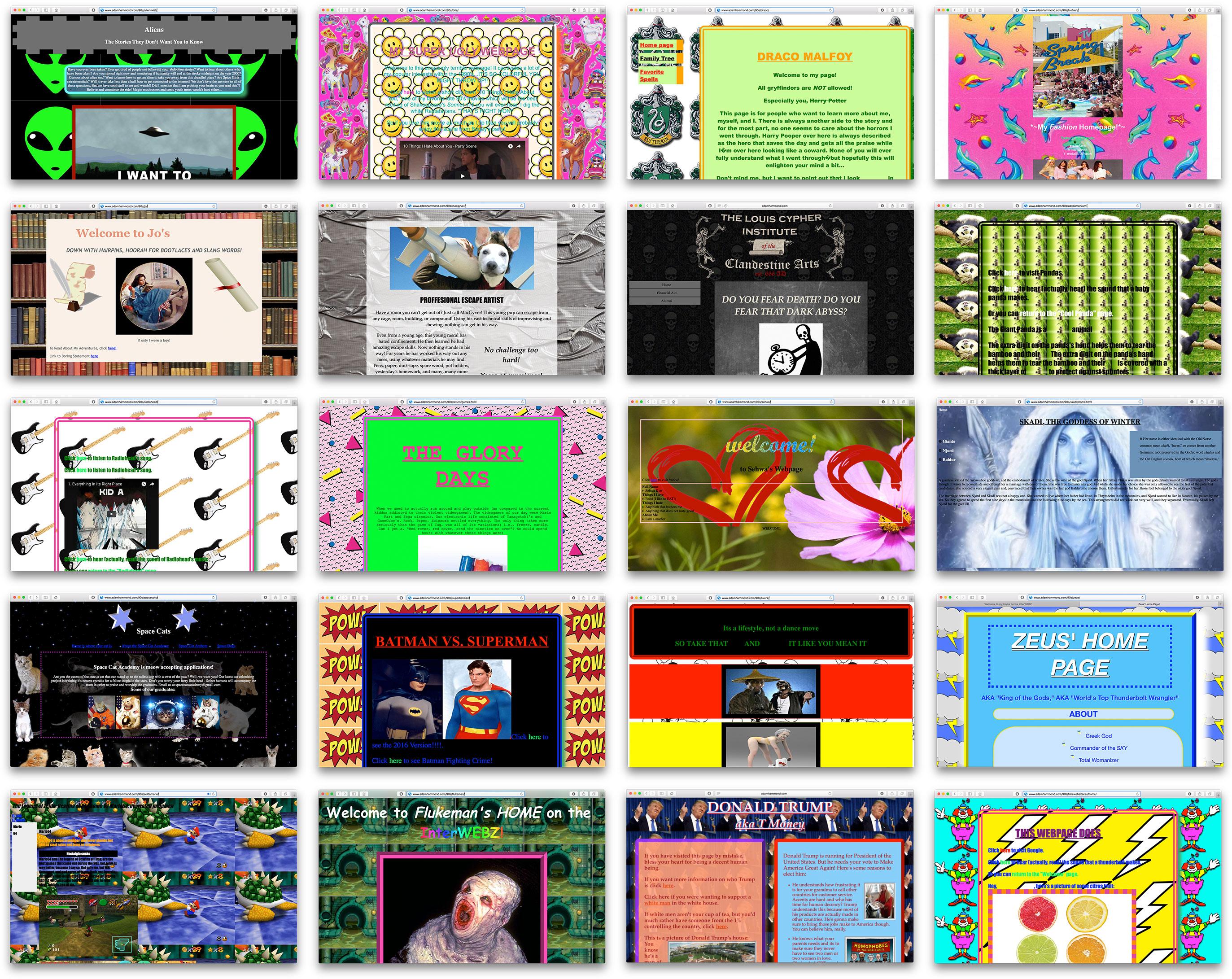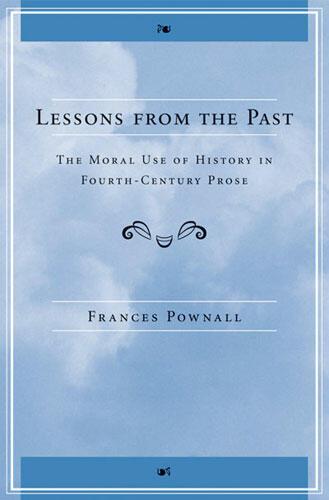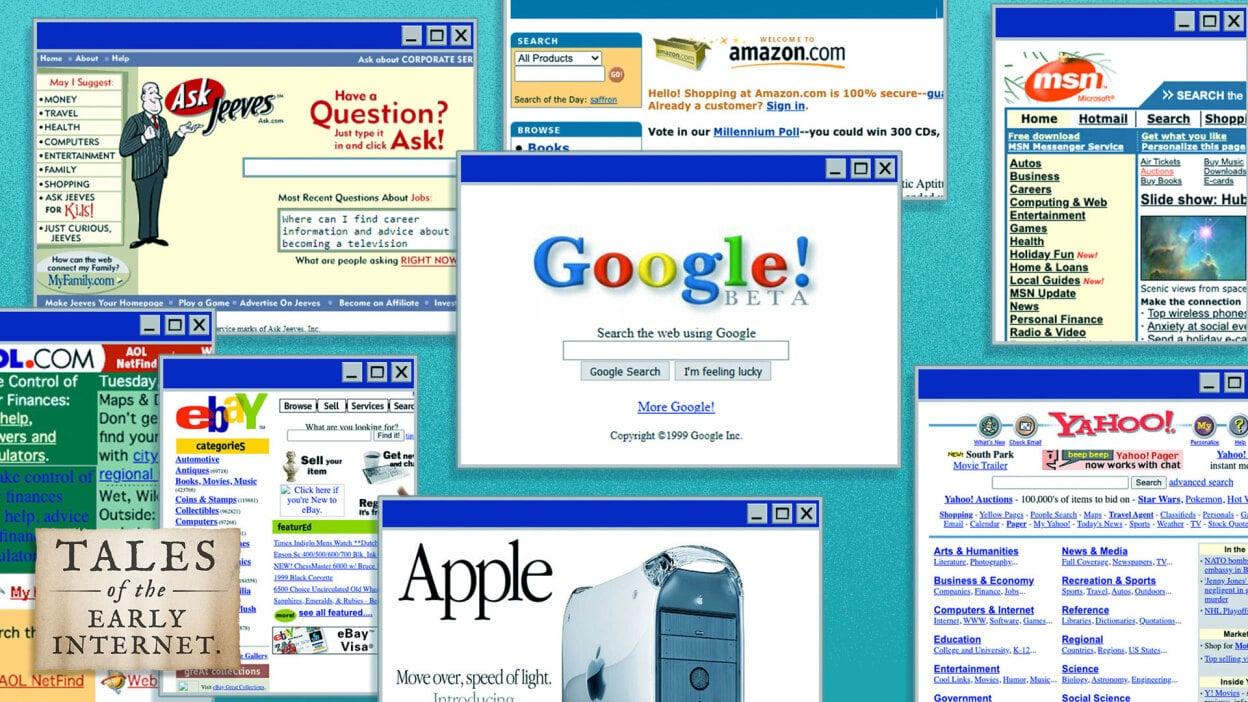Ah, the ‘90s—a decade that brought us flannel shirts, grunge music, and the dawn of the internet as we know it.Remember the thrill of dialing up your modem,hearing that iconic screech,and waiting for your favorite website too load? Those early days of the web were a wild mix of creativity,chaos,and some truly unforgettable sites. Fast forward to today, and while many of those iconic pages have vanished into the digital ether, some have surprisingly managed to stick around.
In this article, we’ll take a nostalgic trip down memory lane as we explore six classic ‘90s websites that defined an era and six that have weathered the test of time. Weather you’re a tech-savvy millennial reminiscing about your childhood or a curious Gen Z’er eager to discover the internet’s roots, there’s something for everyone. Buckle up and get ready to remember (or discover) the quirky, charming world of ‘90s web culture!
Exploring the Nostalgia of Classic ‘90s Websites
When we think back to the Internet of the 1990s, a wave of nostalgia washes over us, reminding us of a simpler time when websites were more about creativity than clean lines and sleek interfaces. Many classic sites encapsulated the quirky spirit of the era, offering a digital playground filled with animated GIFs, vibrant backgrounds, and, of course, counter widgets that proudly displayed how many visitors had graced their pages. The charm of these early websites lies not just in their design but in the memories they evoke, serving as a time capsule of Internet culture.
Among the most memorable sites from this era is GeoCities, which allowed users to create their own little corners of the web. From fan pages dedicated to favorite TV shows to personal diaries, GeoCities fostered a sense of community that, while primitive by today’s standards, was revolutionary at the time. Similarly, Angelfire thrived on user-generated content, enabling budding webmasters to craft their own identities online. These sites exemplified the DIY spirit that defined the Internet’s early days.
Another standout from the ‘90s is Newgrounds, a haven for animated shorts and indie games. It became a launching pad for countless creators, many of whom transitioned to triumphant careers in animation and gaming. The early days of eBaum’s World also contributed to the viral content phenomenon, showcasing hilarious videos and memes that spread like wildfire. Both Newgrounds and eBaum’s World remind us of an era where content was shared for pure fun, without the pressures of monetization and branding.
But what about those classic sites that still stand tall in the digital landscape? It’s interesting to see how some have evolved while retaining the essence of their original charm. As an example, Reddit has transformed into a massive platform but keeps the ethos of community engagement alive.Similarly, eBay continues to thrive, still embracing the auction model that captivated users from the start.These sites not only remind us of the past but also show us how classic concepts can adapt and endure in a rapidly changing world.
| Classic ‘90s websites | Status |
|---|---|
| GeoCities | Defunct |
| Angelfire | Still Up |
| Newgrounds | Still Up |
| eBaum’s World | Still Up |
| LiveJournal | Still Up |
| MySpace | still Up |
the exploration of these iconic websites reveals more than just outdated designs; it highlights the evolution of our digital lives. Each site carries a story,a slice of Internet history that shaped the way we connect,share,and create online today. As we celebrate these gems from the ‘90s, we should also embrace the creativity and innovation that continue to thrive in the ever-evolving web.
Rediscovering Internet Gems That shaped a Generation
As we navigate the vast digital landscape of today, it’s hard not to feel a sense of nostalgia for the internet’s early days. The ’90s were a unique time when websites felt like secret hideaways, each one bursting with personality and innovation. Let’s take a stroll down memory lane and highlight some classic websites that not only captivated our imaginations but also laid the groundwork for the web as we certainly know it today.
First, let’s reminisce about the charm of Geocities. This platform was a pioneer in allowing anyone with a modicum of creativity to build their own corner of the internet. From personal homepages adorned with animated GIFs to fan sites dedicated to obscure television shows, Geocities was a chaotic wonderland that encouraged self-expression. Many of us have fond memories of spending hours customizing our pages with background music and colorful text.
Another gem was AngelFire, where users could create free websites with an array of customizable templates. It was here that many learned the basics of HTML and web design. The thrill of getting your first website online was unmatched. The “under Construction” GIF became a badge of honor as users proudly built their digital domains, forever frozen in time.
And who could forget TheFace? A pioneering website in online social networking, it connected people long before Facebook became a household name. Users could create profiles,share photos,and communicate with friends,making it a precursor to the social media platforms we use today. The excitement of seeing your friends’ updates or engaging in spirited discussions over forums was nothing short of revolutionary.
To put these classic websites in perspective, here’s a brief overview of some notable features:
| Website | Features | Legacy |
|---|---|---|
| geocities | Customizable pages, personal domains | Foundation for personal web hosting |
| AngelFire | Web templates, HTML learning | Early web design platform |
| TheFace | Profiles, photo sharing | Precursor to social media |
Even as technology has evolved, several of these sites have managed to stand the test of time, continuing to provide a platform for creativity and connection. It’s fascinating to see how the essence of those early online experiences persists in the current digital culture.Rediscovering these sites can provide a sense of connection to our past and remind us of the simple joys of the early web.
The Timeless Appeal of Classic Web Design
There’s something undeniably charming about the aesthetic of classic web design from the ‘90s. The vibrant colors, quirky GIFs, and straightforward layout evoke a sense of nostalgia that many web users find appealing today. As we’ve transitioned into a more minimalist and refined digital landscape, these retro designs remind us of the early days of the internet when creativity was boundless, and every page was a personal canvas.
Take a moment to appreciate some of the defining characteristics of classic web design:
- Bold Color palettes: Shining colors and contrasting backgrounds were the norm, making every page pop with personality.
- Simple Navigation: Users were often greeted with straightforward menus that were easy to understand, enhancing user experiance.
- Animated GIFs: From dancing baby animations to flashing banners, these small graphics added life and motion to otherwise static pages.
- Text-Heavy Content: Many sites prioritized content over design, offering extensive data in a compact format.
interestingly, some of these classic designs have stood the test of time and remain accessible on the web today. This resilience speaks volumes about their fundamental principles, which prioritize user engagement and content delivery over fleeting design trends. Websites like these serve as a time capsule, preserving not just information but a slice of internet history that many users can relate to.
To illustrate this, we can highlight a few classic ‘90s websites that are still operational:
| Website | Launch Year | Notable Feature |
|---|---|---|
| GeoCities | 1994 | User-created web pages with unique designs. |
| eBay | 1995 | Pioneering online auction model. |
| Amazon | 1994 | Online bookstore that evolved into a retail giant. |
| Angelfire | 1996 | Free web hosting with customizable templates. |
| Yahoo! | 1994 | Early search engine and web directory. |
| Craigslist | 1995 | Community-based classifieds site. |
In an age where sleek, flat designs dominate, revisiting these classic elements can inspire modern web designers to incorporate unique, engaging features that resonate with users on an emotional level. Embracing aspects of vintage design—whether it’s using vibrant colors or playful animations—can create a sense of familiarity and comfort, inviting visitors to explore and engage more deeply with the content. the timeless allure of classic web design lies in its ability to connect with audiences in ways that are both genuine and memorable.

How These Iconic websites Influenced Modern UX
Reflecting on the evolution of web design, it’s fascinating to see how classic websites from the ‘90s have profoundly influenced modern user experience (UX) principles. Back then, simplicity and functionality ruled the day, setting the stage for the intuitive designs we see now. Sites like Geocities and AOL offered users a glimpse into the future of personalized web experiences,despite their somewhat cluttered interfaces.
One of the most notable impacts of these early designs is the emphasis on user-centric navigation. Websites that prioritized clear pathways for users helped to establish the importance of intuitive menus, which are now a staple in modern UX. The straightforward navigation found on Amazon, as an example, can trace its roots back to the early sites that understood the need for accessible information.
Another significant contribution from these iconic websites was their focus on content hierarchy. Early web designers frequently enough used visual cues like bold text and contrasting colors to guide users through information. This practice has evolved into sophisticated styles of typography and layout that we see in today’s designs. Modern sites like Medium and Wikipedia continue to build on this foundation, presenting content in a way that is both engaging and easy to digest.
Moreover, the concept of community and interactivity was born from platforms such as MySpace and Yahoo!. these sites laid the groundwork for social interaction online, leading to the rich, interactive experiences we expect today on sites like Facebook and Twitter. The ability for users to connect and share is now a fundamental aspect of UX design, fostering a sense of belonging and engagement.
To illustrate how these principles have evolved, consider the following table showcasing some key aspects of classic vs. modern designs:
| Aspect | Classic Websites | Modern Websites |
|---|---|---|
| Navigation | Cluttered menus | Intuitive, streamlined |
| Content Layout | Overloaded text and images | Clear hierarchy with whitespace |
| User Engagement | limited interactivity | dynamic, social interactions |
The influence of these classic websites is undeniable, weaving a rich tapestry that has shaped today’s UX landscape. By learning from the past, current and future web designers can continue to create experiences that resonate with users, ensuring that the core principles of accessibility, engagement, and community remain at the forefront of web design.

A Look at Six ‘90s Websites That Survived the Test of Time
As we delve into the digital landscape of the ’90s, it’s fascinating to observe how some websites have not only endured but have managed to adapt and thrive through the evolving internet era. While many sites faded into obscurity,a select few captured the hearts and minds of millions,evolving to meet the demands of their users. Here’s a closer look at six web phenomena from the ’90s that remain alive and kicking today, preserving the nostalgia of the early internet.
GeoCities was once the go-to platform for personal web pages, offering a space where anyone could express themselves creatively. Although it officially shut down in 2009, the spirit of GeoCities lives on through sites like geocities.ws, which allows users to relive the experience of creating their own personal web pages just like back in the day. The vibrant colors, GIFs, and visitor counters are a nostalgic reminder of the early days of the internet.
eBay, launched in 1995, transformed online shopping with its auction model. This platform has evolved tremendously but retains its foundational goal of connecting buyers and sellers in a unique marketplace. While many online retailers came and went, eBay’s ability to adapt to trends, like mobile shopping and global outreach, has firmly planted it as a staple in online commerce.
Amazon started as a humble online bookstore in 1994 and has as morphed into a global titan of e-commerce, offering everything from groceries to cloud computing services. its growth is a testament to innovation and customer focus,proving that evolving with technology can propel you to unimaginable heights.
For a more interactive experience, Newgrounds has remained a favorite among gamers and animators since its inception in 1995. The community-driven site has provided a platform for indie developers to showcase their work, evolving into a hub for flash animations and games. Newgrounds not only survived; it became a launchpad for many creative talents in the world of digital entertainment.
| Website | Year established | Current Status |
|---|---|---|
| geocities | 1994 | Closed (Revived as GeoCities.ws) |
| eBay | 1995 | Active |
| Amazon | 1994 | Active |
| Newgrounds | 1995 | Active |
Lastly, we can’t forget about Yahoo!, which started as a search engine directory in 1994 and quickly became a portal for news, email, and more.While it has faced many challenges over the years, Yahoo! has managed to remain relevant by continuously adapting its services to fit modern needs. Its blend of nostalgia and innovation keeps users returning for a mix of the past and present.

What Makes These Websites Still Relevant Today
In an age of rapid technological advancements and ever-changing design trends, some websites from the ’90s continue to hold their ground. their ability to adapt and evolve in an increasingly digital world speaks volumes about their enduring relevance. Here are a few key factors that contribute to the sustained importance of these classic sites.
- Timeless Content: Many of these websites have built a legacy around content that remains valuable. Information on classic topics, nostalgia-inducing media, and fundamental resources can keep audiences engaged irrespective of the current trends.
- User-Centric Design: While they may not boast the sleek aesthetics of modern-day sites, many of these vintage platforms prioritize usability and accessibility. Their straightforward layouts often enhance user experience, allowing visitors to navigate easily.
- Community Building: Several classic sites have cultivated vibrant online communities. Forums, message boards, and user-generated content create a sense of belonging that new platforms often struggle to replicate.
Moreover, these websites showcase an authenticity that resonates with users who value a sense of nostalgia. the simplicity of the ’90s web experience can be a refreshing break from the complexity of contemporary internet spaces.This nostalgic charm invites users to revisit their formative online experiences while also attracting new visitors curious about digital history.
| Website | Launch Year | Current Relevance |
|---|---|---|
| GeoCities | 1994 | Still a symbol of web creativity and personal expression |
| eBay | 1995 | Remains a leading platform for online auctions |
| Amazon | 1994 | Dominates e-commerce with continual innovation |
adaptability is a crucial element of their ongoing success. Many of these sites have embraced modern technologies while retaining their foundational ethos. By integrating social media, mobile compatibility, and enhanced security features, they maintain a balance between nostalgia and contemporary functionality, ensuring that they remain not just relics of the past but vibrant parts of today’s digital landscape.

Why You Should Visit These Retro websites Again
remember the thrill of dialing up the Internet, the cheerful sound of a modem connecting, and the almost magical experience of browsing the very first websites? There’s something undeniably nostalgic about revisiting those classic ‘90s websites. Whether you’re looking to relive some cherished memories or introduce a new generation to the early days of the web, these sites offer a unique slice of the Internet’s history.
Exploring retro websites can be a delightful blast from the past. They remind us of a simpler time when the web was just starting to blossom. The bold colors, animated GIFs, and distinctive layouts evoke a sense of wonder that many modern sites, with their sleek designs and minimalist aesthetics, simply don’t capture. Each click transports you back to an era filled with creativity and unrestrained experimentation.
Here are just a few reasons to dive back into those pixelated landscapes:
- Embark on a digital time capsule: Each website encapsulates the cultural zeitgeist of its time, showcasing trends, memes, and technology that defined a generation.
- Rediscover forgotten gems: Many of these sites feature quirky content, from vintage games to retro forums, that can still entertain and inspire. You might just stumble upon a game you loved or a community that once felt like home.
- Appreciate the evolution of design: Browsing these sites offers a fascinating perspective on how web design has evolved. You’ll see firsthand the innovations that have shaped our current online experiences.
For those who wish to dive deeper,consider checking out a simple comparison of classic ‘90s web design versus today’s standards:
| Feature | ‘90s Websites | Modern Websites |
|---|---|---|
| Color Schemes | Bright,clashing colors | Soft,understated palettes |
| Navigation | Text-based,minimal | Intuitive,user-centric |
| Content Types | Static pages,GIFs | Dynamic,interactive |
moreover,revisiting these sites can inspire a sense of community. Many of them still have active forums or message boards where nostalgia reigns supreme. By engaging with fellow enthusiasts, you can share stories, swap recommendations, and even rekindle friendships that started in the early days of the web.
So why not take a trip down memory lane? Explore those classic ‘90s websites again and indulge in the joy of revelation. You never know what delightful surprises await you, just as they did two decades ago.

The Unforgettable Content That Kept Us Coming Back
Back in the ’90s, navigating the web was like exploring an uncharted island.Every click opened up a world of creativity and quirks, with sites that left a lasting impression. Here are some of the unforgettable gems that kept us coming back for more.
- Geocities: This was the go-to place for anyone wanting to build their own personal website. With endless customization options and quirky animations,it was a playground for digital expression.
- Angelfire: similar to Geocities, Angelfire let users create free websites with an array of templates. Remember those iconic “under construction” GIFs? They were everywhere!
- eBaumsworld: This site was a treasure trove of memes, videos, and games that defined internet culture.It was a constant source of laughter and entertainment for countless hours.
- Newgrounds: A haven for indie game developers and animators,Newgrounds showcased creativity in its purest form. From flash animations to unique games, it fostered a community of creators.
- Tripod: Another classic web hosting service, Tripod allowed users to create personal pages with a touch of flair. Its colorful backgrounds and animated GIFs were a hallmark of early web design.
- Homestar Runner: This animated series took the web by storm with its offbeat humor and memorable characters. Fans eagerly returned for new episodes, making it a cultural phenomenon.
Even as the internet evolved, some of these classic sites have managed to stand the test of time. Below is a quick look at a few that are still active today:
| website | Year Launched | Current Status |
|---|---|---|
| Newgrounds | 1995 | Active |
| eBaumsworld | 2001 | Active |
| Homestar Runner | 2000 | Active |
| angelfire | 1996 | Active |
| Tripod | 1995 | Active |
These platforms not only shaped our experiences but also created lasting memories. Revisiting them brings a wave of nostalgia, reminding us of simpler times when the internet was a place of discovery and wonder.

Lessons from the Past: what Today’s websites Can Learn
The web has come a long way as the vibrant colors, clunky animations, and simple layouts of the ‘90s. Yet, as we look back at some of the classic websites from that era, there are valuable lessons to be drawn for today’s digital landscape. While technology has evolved, the fundamental principles of user engagement and design remain timeless.
Embrace Simplicity: Many of the most beloved ‘90s websites thrived on simplicity. Their designs were straightforward, focusing on delivering content without overwhelming users.Today’s websites can learn from this by prioritizing clean layouts and intuitive navigation. Users appreciate when they can find what they’re looking for without a maze of menus and pop-ups.
Value Community engagement: Websites like geocities and forums that flourished in the ‘90s fostered a sense of community among users. This sense of belonging is still crucial. Incorporating features that encourage user interaction, such as comments, forums, or social sharing options, can create a loyal user base. Today’s websites should strive to build communities around their content, promoting discussion and engagement.
Prioritize Loading Speed: The dial-up era taught users to appreciate quick loading times. websites that loaded slowly were often abandoned. In today’s fast-paced world, users have little patience for delays. Optimizing images and streamlining code are essential practices that can significantly enhance user experience, reducing bounce rates and increasing engagement.
| Classic Website | What We Can Learn |
|---|---|
| Geocities | Community building and user-generated content |
| Angelfire | Simple design and easy navigation |
| Tripod | Customization and personal expression |
| Hotmail | Fast service and user-friendly interfaces |
| Ask Jeeves | engaging user queries and personalized results |
| Neopets | Engaging content and gamification |
Celebrate Content Variety: The early web was a treasure trove of quirky, niche content that catered to diverse interests. Today’s websites should also embrace a variety of content formats—blogs, videos, podcasts, and infographics—to appeal to different audiences. By offering diverse content, websites can keep users engaged and encourage them to return for more.
Ultimately, while technology and design trends continue to evolve, the core principles of user experience remain constant. By drawing inspiration from the past, today’s websites can create engaging and valuable experiences for their users, ensuring they stand the test of time.

Your Guide to Experiencing the Best of both Worlds
In the ever-evolving landscape of the internet,it’s fascinating to look back at the digital gems of the ’90s. for many, these websites were not just pages on a screen; they were gateways to a new world of information, entertainment, and community. The nostalgia is palpable, and the thrill of rediscovering these sites can offer a unique blend of the past and present, a true chance to experience the best of both worlds.
Imagine revisiting GeoCities,where vibrant backgrounds and animated GIFs ruled. It was a time when personal websites flourished, each reflecting the owner’s personality.Today, while the original platform no longer exists, you can find remnants of those creative expressions in various online archives. These showcases of individual creativity remind us of the internet’s potential for personal storytelling.
Then there’s Netscape, a name synonymous with the dawn of the web browser era. While Netscape may not operate as it once did,its legacy lives on in modern browsers. Browsing the internet today is a much smoother experience, but harking back to Netscape’s iconic loading screen can stir up a sense of appreciation for how far we have come.
| Classic ’90s Websites | Still Active Today |
|---|---|
| GeoCities | Internet Archive |
| Netscape | Yahoo! |
| Angelfire | eBay |
| LiveJournal | Amazon |
| Tripod | |
| Ask Jeeves | Wikipedia |
In contrast, today’s digital landscape boasts websites that have seamlessly blended the essence of their ‘90s counterparts with contemporary elegance. Platforms like eBay and Amazon continue to thrive, making it easier than ever to shop online while maintaining that nostalgic feeling of discovering unique items. Each click can evoke memories of browsing through virtual flea markets or cataloging through old listings.
Moreover, the resurgence of LiveJournal reminds us that community forums still hold ample value. While the interface may have evolved, the essence of sharing life stories and connecting with like-minded individuals remains. This blend of nostalgia and modernity can cultivate a profound appreciation for both eras, allowing users to create a rich tapestry of online experiences.
Frequently Asked Questions (FAQ)
Title: 6 Classic ‘90s Websites (+ 6 that Are Still Up)
Q: What are some classic websites from the ‘90s that everyone remembers?
A: Oh, there are so many nostalgic gems! Think back to the days of Geocities, where everyone had their own personal page filled with glittery GIFs and bad music. Then there’s AOL Instant Messenger, the original chat platform that kept us connected. And who could forget eBay? It revolutionized online shopping! Other notable mentions include Ask Jeeves, the quirky search engine, and the original Yahoo! homepage, which was practically the internet’s directory before Google took over.
Q: Are any of these classic sites still around today?
A: Absolutely! While many have faded into internet history, some have managed to evolve and stick around. As an example, eBay is still a major player in online commerce. And guess what? Ask jeeves rebranded itself as Ask.com and still exists, though it’s not quite the same anymore. Even Yahoo! is still up and running, though it has undergone many changes since the ‘90s.
Q: Why should we care about these old websites?
A: Great question! These sites are like time capsules that remind us of the early days of the internet. they represent a simpler time when the web was more about personal expression and community. Plus, exploring them can be a fun trip down memory lane, sparking conversations about our digital origins and how far we’ve come since the days of dial-up connections!
Q: are there any ‘90s websites that still embody that classic feel today?
A: Definitely! Websites like eBay retain that vintage shopping experience, while platforms like Angelfire and Tripod still let users create personal sites with that nostalgic feel. Even sites like Archive.org work to preserve the internet’s past,giving us a peek into how these classic sites looked back in their heyday!
Q: What can we learn from these classic websites?
A: The evolution of these sites teaches us about adaptability and innovation.For instance, eBay transitioned from a simple auction site to a comprehensive e-commerce platform. They remind us that the online world is always changing, and staying relevant means embracing change while still honoring your roots.
Q: What’s the takeaway from looking at ‘90s websites?
A: The takeaway is that the internet is a living archive of our collective culture. By revisiting these classic sites, we not only celebrate the past but also gain insights into how user experiences and digital landscapes have evolved. Plus, it’s a great conversation starter about the quirky, sometimes chaotic, nature of the early web!
Q: So, what woudl you recommend for someone looking to explore classic ‘90s websites?
A: Start by checking out websites like eBay and Angelfire for that retro feel. You can also visit Archive.org to explore snapshots of these sites as they were in their prime. It’s a fantastic way to appreciate the charm of the ‘90s web while reflecting on the tech-savvy world we live in today!
—
Feel inspired to take a trip down memory lane? Dive into the nostalgia of ‘90s websites and see how they shaped the digital landscape we certainly know today!
Wrapping Up
As we wrap up our nostalgic journey through the classic websites of the ‘90s,it’s clear that the internet has come a long way as those dial-up days. Whether you were catching up on the latest news at Yahoo! or exploring the quirky corners of GeoCities, those early online experiences shaped the way we interact with the digital world today.
But why stop here? The fact that some of these sites are still up and running is a testament to their lasting impact and the fond memories they evoke. So, why not take a trip down memory lane and revisit these digital relics? You might just find a spark of inspiration or a reminder of simpler times.
Next time you find yourself scrolling through social media, take a moment to appreciate where it all began.Explore these timeless websites, and you’ll not only honor the internet’s rich history but also discover how far we’ve come. Who knows? You might even stumble upon a vintage forum or an old-school chat room that reignites that sense of community we all cherished back in the day.
So, what are you waiting for? Dive back into the ‘90s and relive the magic of those classic websites. After all,the past is just a click away!




